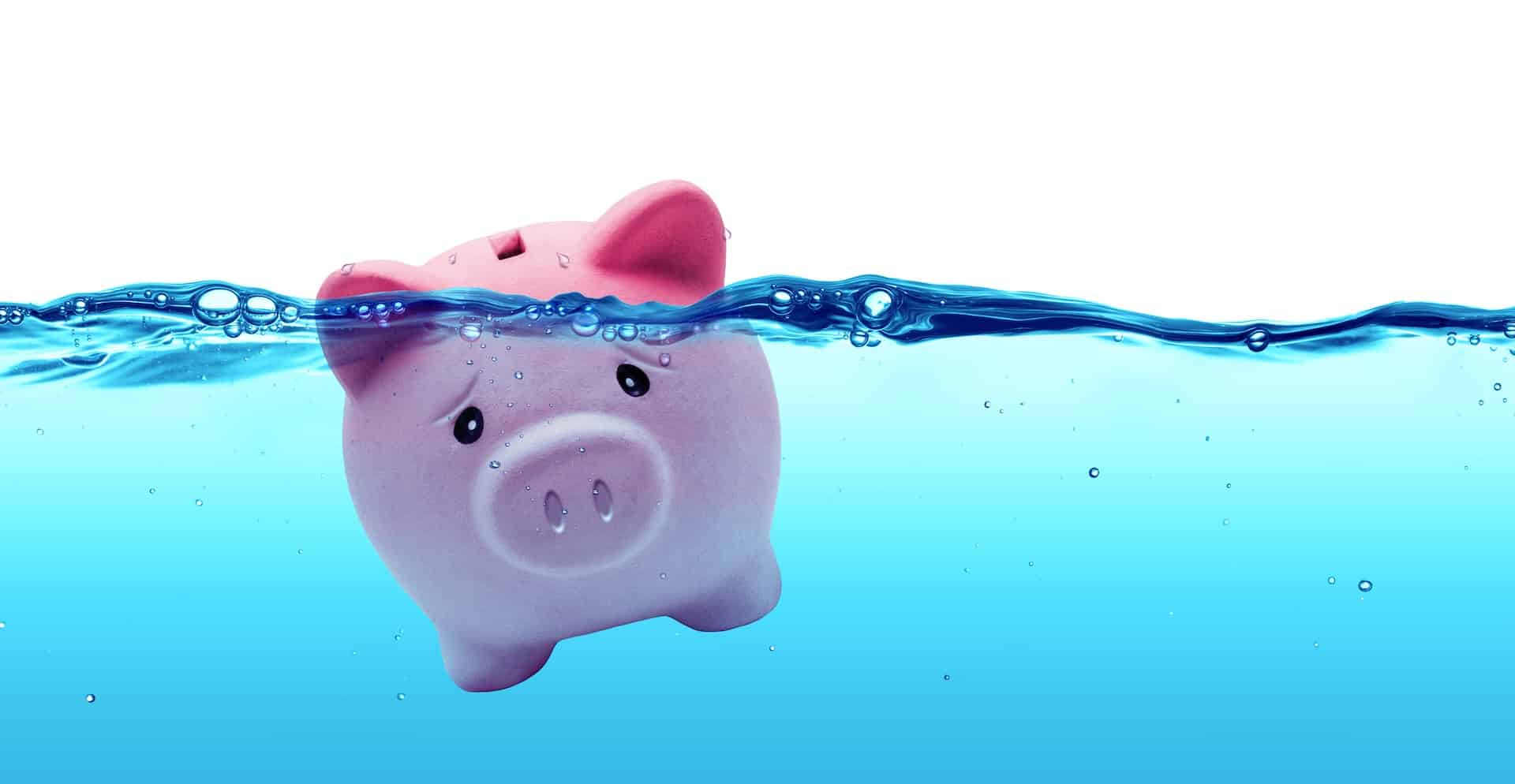Credit Sesame explains recent data on auto loans and credit cards and why some Americans are drowning in debt.
Many Americans use credit regularly without accumulating a lot of debt. For others, debt becomes a never-ending spiral of higher and higher balances. Recent data on auto loans and credit cards provides insight into how debt can grow quickly.
Adding debt with negative equity when buying a car
The Consumer Financial Protection Bureau (CFPB) recently released a report on the role of negative equity in auto financing. Negative equity means that you owe more on an asset than the asset is worth. People talk about negative equity in connection with home values. When the balance owed on a mortgage exceeds the value of the home, the property has negative equity.
Cars have equity, too. If you own a vehicle free and clear with no debt, its market value is all equity. This is a positive contribution to your net worth. If you owe money on a car loan, the amount you owe is subtracted from the car’s market value to calculate the car’s equity. If you owe more than the car is worth, you have negative equity in the car. This subtracts from your net worth.
Negative equity can result from borrowing more than the car is worth when you buy it or taking so long to repay the loan that the car depreciates in value faster than you pay down your loan balance.
If you want to sell a car that still has a loan outstanding, you generally have to pay off the balance of that loan. If the vehicle has negative equity, you cannot do this with the proceeds from the sale. Unfortunately, some get around this by financing that negative equity with a new loan. They do this by trading in the car for a different vehicle and adding negative equity to the new car loan amount. According to the CFPB report, 11.6% of car loans between 2018 and 2022 included negative equity on a trade-in.
Paying more by using credit cards for everyday spending
People increasingly use credit cards rather than cash, checks, or debit cards for routine payments. A Federal Reserve Bank of Atlanta report found that credit cards have grown in popularity as the preferred payment method since 2015.
- Paying for online purchases by credit card has grown by 6 percentage points to 57%
- Making in-person payments by credit card has grown by 8 percentage points to 36%
- Paying bills by credit card has risen by 8 percentage points to 18%
For many consumers, this increased credit card use raises the cost of goods and services. 47% of credit card users incur interest charges by carrying balances forward from one statement period to the next. 32% of credit card users pay fees on their cards.
Timing is everything to avoid drowning in debt
What do financing negative equity and increased credit card usage have in common? They both represent taking on debt that lasts longer than the product or service purchased.
Financing negative equity from your old car when you buy a new one means the debt from your previous car loan has lasted longer than your use of the vehicle. This can lead to a cycle of rising debt levels, as people have to take on a new auto loan before they’ve finished paying off their last one. This tends to hurt credit. People who financed negative equity with a new car loan were more likely to have their new vehicles assigned for repossession within two years than those who traded in positive equity or had no trade-in. They also typically had lower credit scores.
Longer car loans offer the lure of lower monthly payments. However, extended repayment periods mean more interest over the life of the loan and a greater likelihood of ending up with negative equity. When buying their next vehicle, people who trade in a car with negative equity tend to finance the new purchase with a longer loan. Thus, the cycle perpetuates itself.
Paying by credit card delays paying for goods and services until later. For roughly half the consumers in the Atlanta Fed’s study, this also increased the pattern of extending debt longer than the useful life of the thing bought. Making short-term purchases or paying monthly bills with a credit card is fine as long as you pay your balance off every month. For the 47% of consumers who do not pay off the balance in full, their debt increases, and the overall cost of their purchases rises due to interest charges on the debt owed.
Increasing debt is bad for your credit
Taking on debt that lasts longer than the useful life of what you buy can be a vicious cycle. It may lead to steadily growing debt balances and deteriorating credit scores. Those declining credit scores make using credit more expensive, further adding to the problem.
Learn to thrive on credit without drowning in debt
To effectively manage credit and avoid debt traps, consider the following practices:
- Avoid taking on new debt before paying off existing debt.
- Pay off your credit card balance in full every month.
- Compare the repayment period to the lifespan of the purchase.
- Use cash or debit cards for routine purchases to prevent interest accumulation.
- Monitor your credit report regularly to stay aware of your debt levels.
By adopting these practices, you can learn to effectively manage your credit and avoid the pitfalls of accumulating debt.
If you enjoyed The difference between thriving on credit and drowning in debt you may like,
- Consumer spending resilience financed by debt
- What NOT to do if you have large credit card debt
- How do credit cards impact your net worth?
Disclaimer: The article and information provided here are for informational purposes only and are not intended as a substitute for professional advice.




















